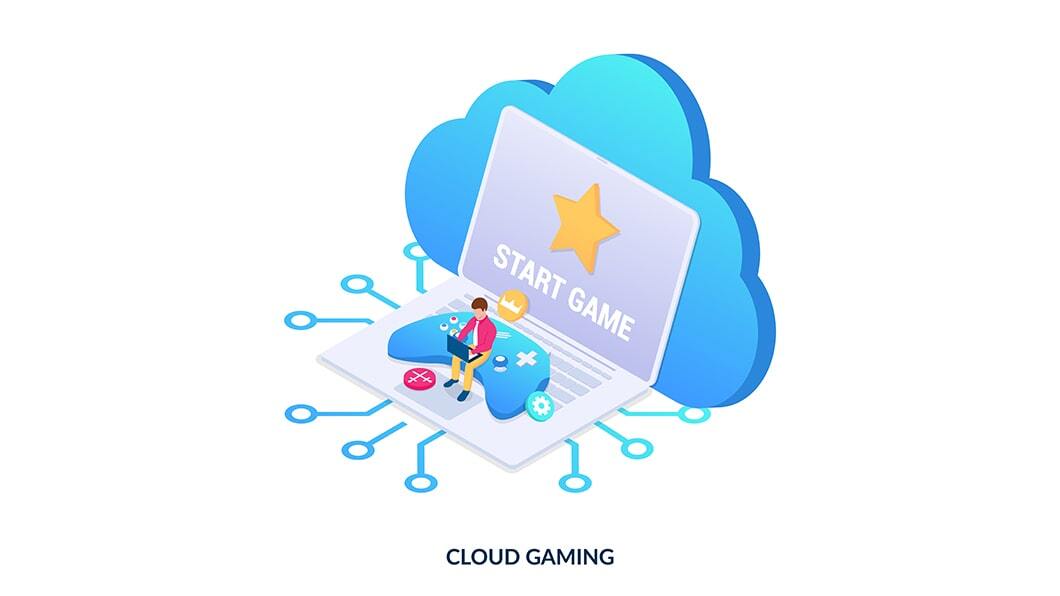
Cloud Gaming: Gaming without Powerful Hardware
Gaming has evolved significantly over the years, and with the rise of technology, a new trend has emerged: cloud gaming. Cloud gaming allows gamers to enjoy their favorite titles without the need for expensive and powerful hardware. In this article, we will explore the concept of cloud gaming, how it works, its benefits and challenges, and its impact on the gaming industry.
What is Cloud Gaming?
Cloud gaming, also known as gaming on-demand or gaming as a service (GaaS), is a streaming technology that enables players to stream and play video games directly from remote servers. Instead of relying on local hardware to run the games, cloud gaming utilizes the power of data centers and high-speed internet connections to stream the game content to a user’s device. This means that gamers can play graphics-intensive and resource-demanding games on devices with lower specifications, such as smartphones, tablets, or low-end PCs.

How Does Cloud Gaming Work?
Cloud gaming works by offloading the processing and rendering tasks to powerful servers located in data centers. When a player initiates a game session, their input commands are transmitted to the remote server, which processes the commands, renders the game frames, and streams the video and audio output back to the player’s device in real-time. The player’s device acts as a client, receiving the game stream and transmitting input commands to the server.
To ensure a smooth and responsive gaming experience, low-latency internet connections are essential. The player’s input commands need to reach the server quickly, and the game stream must be delivered to the player’s device without noticeable delays. Therefore, a stable and high-speed internet connection is crucial for optimal cloud gaming performance.
Benefits of Cloud Gaming

Cloud gaming offers several benefits that have contributed to its growing popularity:
- Accessibility and Convenience: One of the primary advantages of cloud gaming is its accessibility. Players can enjoy high-quality gaming experiences on a wide range of devices, including smartphones, tablets, smart TVs, and low-spec computers. There is no need to invest in expensive gaming hardware, as the heavy lifting is done by the remote servers. Additionally, cloud gaming allows players to seamlessly switch between devices, picking up where they left off without any interruption.
- Cost Savings: Cloud gaming eliminates the need to purchase expensive gaming consoles or upgrade computer components to meet the system requirements of modern games. Instead, players can subscribe to cloud gaming platforms that offer a library of games accessible through a monthly fee or pay-per-play model. This significantly reduces the upfront costs associated with gaming, making it more affordable and accessible to a wider audience.
- Flexibility and Scalability: Cloud gaming platforms provide flexibility and scalability in terms of game library and storage capacity. Players can access a vast catalog of games without worrying about storage limitations. Additionally, as the games are stored and processed on remote servers, updates and patches are automatically applied, ensuring players have the latest versions of their favorite games without the need for manual downloads or installations.
- Technological Advancements: Cloud gaming has been made possible by advancements in technology, such as faster internet speeds, improved video compression algorithms, and powerful server infrastructure. These advancements have enabled seamless streaming of high-quality game content with reduced latency and increased visual fidelity, offering an immersive gaming experience comparable to traditional gaming setups.
Challenges and Limitations

While cloud gaming has its benefits, there are also challenges and limitations to consider:
- Internet Connection Requirements: Cloud gaming heavily relies on a stable and high-speed internet connection. Players with slow or unreliable internet connections may experience lag, latency, or interruptions in the game stream, leading to a subpar gaming experience. Additionally, players in regions with limited access to high-speed internet may face difficulties in accessing cloud gaming platforms.
- Latency and Input Lag: Despite advancements in technology, there can still be some latency and input lag in cloud gaming. Since the game processing and rendering occur on remote servers, there is a delay between the player’s input and the corresponding action on the screen. While efforts have been made to minimize latency, it can still be noticeable, especially in fast-paced competitive games where split-second reactions are crucial.
- Dependency on Internet Connection: Cloud gaming requires a continuous and stable internet connection throughout the gaming session. Any interruptions or fluctuations in the connection can disrupt the gameplay or cause the game to freeze or lag. Players in areas with limited internet access or unreliable connectivity may face difficulties in enjoying a smooth and uninterrupted gaming experience.
- Data Usage and Bandwidth: Cloud gaming consumes significant amounts of data, especially when streaming high-resolution game content. Players with limited data plans may need to monitor their usage carefully to avoid exceeding their limits. Moreover, cloud gaming puts demands on bandwidth, which may affect other activities that require internet connectivity in the household, such as streaming movies or video calls.
- Game Availability and Licensing: The availability of games on cloud gaming platforms can vary. While popular and mainstream titles are often included in the library, some games may be exclusive to specific platforms or not available at all. Licensing agreements and contractual arrangements can impact the selection of games offered on cloud gaming platforms, limiting the choices available to players.
Privacy and Ownership: With cloud gaming, the games are stored and processed on remote servers owned by the platform provider. This raises concerns about data privacy and ownership. Players may have to share personal information and gaming data with the platform, and there may be limitations on modding or customizing games. Additionally, the ability to access and play games can be dependent on the platform’s availability or subscription status.
The Future of Cloud Gaming

Cloud gaming is an evolving technology that has the potential to reshape the gaming industry. As internet infrastructure continues to improve and technology advances, we can expect cloud gaming to become more seamless and accessible. The integration of 5G networks, edge computing, and improved server infrastructure will further reduce latency and enhance the overall gaming experience.
Cloud gaming also opens doors for new business models and opportunities. Game developers and publishers can reach a broader audience without the need for players to invest in dedicated gaming hardware. Cross-platform play and compatibility between different devices can become more prevalent, allowing players to seamlessly transition between devices and continue their gaming experiences.
In conclusion, cloud gaming represents a paradigm shift in the way we access and enjoy video games. It offers accessibility, convenience, and cost savings while leveraging the power of remote servers to deliver immersive gaming experiences. While there are challenges to overcome, advancements in technology and infrastructure continue to drive the growth and potential of cloud gaming. As the industry evolves, we can expect more innovations and improvements that will shape the future of gaming.
Frequently Asked Questions (FAQs)
1. Is cloud gaming suitable for all types of games?
Cloud gaming is suitable for a wide range of games, including single-player, multiplayer, and even graphically demanding titles. However, games that heavily rely on precise and real-time inputs, such as competitive esports games, may still benefit from local gaming setups to minimize latency.
2. Can I use any device for cloud gaming?
Cloud gaming is designed to be compatible with various devices, including smartphones, tablets, PCs, laptops, and smart TVs. However, it’s important to check the specific requirements and compatibility of the cloud gaming platform with your chosen device.
3. How much internet speed do I need for cloud gaming?
The recommended internet speed for cloud gaming varies depending on the platform and desired quality. Generally, a stable internet connection with a minimum speed of 10 Mbps is required for smooth gameplay. Higher speeds, such as 25 Mbps or more, are recommended for streaming in high-definition or 4K resolution.
4. Are there any additional costs associated with cloud gaming?
While some cloud gaming platforms offer free access to a limited library of games, many platforms require a subscription or pay-per-play model. Additionally, players should consider the cost of their internet connection, especially if they have data caps or limited bandwidth.
5. Can I play cloud games offline?
Most cloud gaming platforms require an internet connection to stream and play games. However, some platforms offer options to download certain games for offline play. It’s essential to check the features and limitations of the specific platform you are using.














